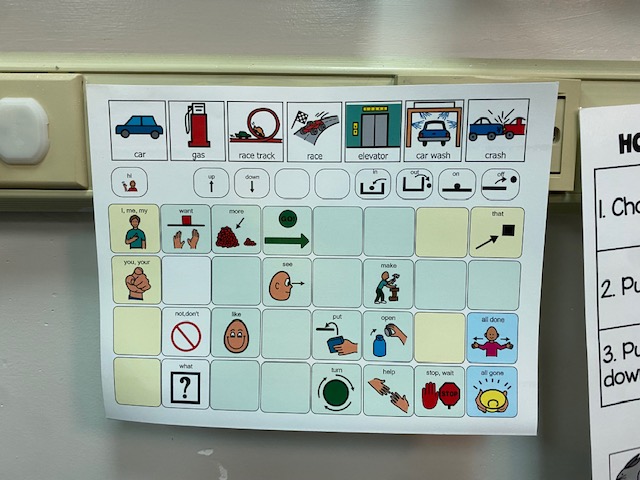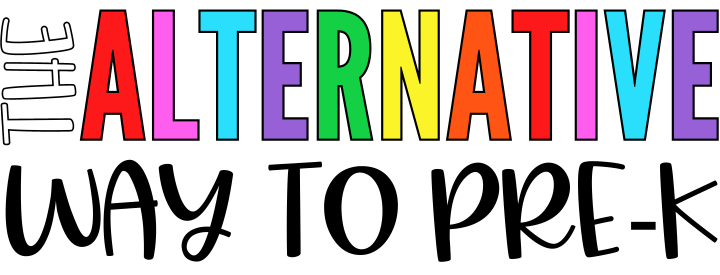You probably have heard the terms “AAC” or “modeling” and have wondered what that meant. Even more so, modeling AAC without expectations. Maybe you already know what they means but you’ve struggled to implement it. In this post, I am going to show you how to implement AAC and modeling without expectation in the classroom. One thing before we dive in, ALWAYS collaborate with your team SLP or ATP when you have any questions or need support. They are the experts.
What is AAC?
AAC stands for Alternative and Augmentative Communication. AAC is all modes of communication besides expressive speech aka talking. AAC can be used as a the sole means of communication for a student and will be for the rest of their lives. Other times it is used to bridge the langue gap or promote correct articulation. There are different forms of AAC, no tech, low tech, mid-tech, and high-tech. It ranges from simple facial expression all the way to a complex application on an iPad. For more information check out Tobi Dynavox Resources and specifically their Getting Started With AAC Page.
In my classroom the majority of my students are on a low-tech device which uses a core board and fringe. Check out some of the AAC resources we use in my classroom HERE.
What is Modeling and Why?

Modeling does not mean you are walking down the runway. It means you are leading by example. When you model you are simply modeling speech on the student’s device or a large classroom variation of the device. One of the most common modeling strategies is called aided language simulation. Modeling provides a base, expectation, and reinforcement. Children learn more effectively with modeling. It may take you saying apple +300 times but on that 301st try they might get it. It can be overwhelming, and you may drive yourself nuts repeating yourself, but this is how your student will learn. Children are also more inclined to respond appropriately when presented with a model.
I’m Not Buying It
Now for starters, I am not a SLP or ATP. However, I work very closely with my team and have a passion for AAC. One of the biggest struggles we have is teacher buy-in. They know what they have to do but they either they don’t think they have the time to do it or think it does not work. I was that person! I thought it was useless and redundant but let me tell you I was wrong. What changed my mind? I saw it in action. I stuck with it and over the course of three months (because we all know things like this take time), I saw progress. That single instance of progress lit the fire within me and I became AAC obsessed!
I share this because it is human nature to want instant gratification. However, in the field of special education, we know that can not always be the case. For example, when you implement a new behavior intervention it usually gets worse before it gets better. We usually do not see instant results, we have to stick to it. Same thing with AAC. You have to stick to it and be consistent.
How to Incorporate and Generalize AAC Into My Classroom for Beginners

In addition to modeling on students personal devices it is important we are modeling across all areas of our school environment. Notice how I said school environment not just classroom. We need to be modeling in the bathroom, on the playground, in the cafeteria. How do I do this? Low tech and visuals. If you follow me on Instagram you will notice I have low tech core boards almost on every wall like my center core boards. These low tech boards allow anyone to walk into that specific area of the room/school and have the specific vocabulary to model for students. Think about when a toddler is learning to talk. You repeat that word over and over again. The same goes for modeling. You repeat the word or phrase multiple times. Our early scholars need to be bombarded and emersed in language in order to learn in.
Now at first this may seem like a cumbersome task BUT I promise you it becomes almost second nature and will just come naturally. You may feel awkward and go really slow and that is normal. Overtime it will become just like normal speech for you. Half the time when I am modeling I do not even realize but it has become just like speaking to me.


You may be thinking, “Okay Lucy yeah this sounds great but it’s also overwhelming.” I completely understand. If that is the case start with one area of your day. A super easy one is snack time or the bathroom and I have some free resources for that in my Free Resource Library. Incorporate AAC and modeling into one of these areas. When you feel like you have mastered it incorporate into another area like the playground. Keep going until you have covered all areas of your day and school environment.
